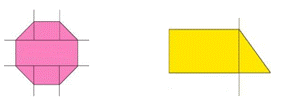What Is Air Conditioning?

“A system for controlling the temperature and humidity of the air in a building.”
Controlling the temperature is being able to heat and cool. Not only cool.
The air that we breathe is made up of 3 major components all capable of carrying energy (heat):
The component molecular constituents of air: Oxygen (23%), Nitrogen (76%), Carbon Dioxide (1%) and Inert Gases (1%)
Moisture or Water Vapor: Water vapor is present in the air at all times, the quantity present being dependent upon the air temperature. The higher the air temperature the higher the water vapors (quantity).
Airborne Particulate: These are the suspended impurities within the air from either industrial or natural pollution such as pollen, dust, smoke, germs etc.
As air is the only media that encompasses the whole of our body, we need to condition this air to provide comfort. The action we need to take is:
-
Control Temperature (heating & cooling) which entails adding energy (heating) or removing unwanted energy (cooling). General comfort conditions range between 20 - 25℃ in the UK.
-
Control Humidity (moisture content in the air), either humidify (add moisture) when dry, which can result in dryness of skin, dry throat and encourages static build-up) or de-humidify (remove moisture) when the amount of moisture in the air is high, which can result in breathing discomfort. Comfort humidity is generally between 30-70 % RH (Relative Humidity) for the UK.
-
Provide Ventilation to provide the necessary oxygen for breathing and dispelling carbon dioxide, odor, dust, smoke etc. General ventilation requirement ranges between 5 - 18 liters per second per person.
-
Provide Filtration to clean outside and inside air by removing dust, pollen, etc. Dust in dry air combined with dryness (lack of moisture in the air) is the main cause of static shocks. Lack of ventilation and filtration combined with the lack of maintenance is the main causes of Sick Building Syndrome (SBS).
Properly Sized Room Air Conditioners
Many people buy an air conditioner that is too large, thinking it will provide better cooling. However, an oversized air conditioner is actually less effective — and wastes energy at the same time. Air conditioners remove both heat and humidity from the air. If the unit is too large, it will cool the room quickly, but only remove some of the humidity. This leaves the room with a damp, clammy feeling. A properly sized unit will remove humidity effectively as it cools.
To figure out which size unit is best for your cooling needs:
1. Determine the square footage of the area to be cooled using the following formulas:
-
For square and rectangular rooms, multiply the length of the area by its width
-
For a triangular area, multiply the length of the area by the width and divide by 2
Most rooms can be further divided into these basic shapes to determine the square footage.

If the shape of your room is other than square or rectangular, ask your sales associate to help you determine the square footage.
2. Using the square footage and the chart below, determine the correct cooling capacity. Cooling capacity is measured in British thermal units (BTUs) per hour.
| Area To Be Cooled (square feet) | Capacity Needed (BTUs per hour) |
|---|---|
| 100 up to 150 | 5,000 |
| 150 up to 250 | 6,000 |
| 250 up to 300 | 7,000 |
| 300 up to 350 | 8,000 |
| 350 up to 400 | 9,000 |
| 400 up to 450 | 10,000 |
| 450 up to 550 | 12,000 |
| 550 up to 700 | 14,000 |
| 700 up to 1,000 | 18,000 |
| 1,000 up to 1,200 | 21,000 |
| 1,200 up to 1,400 | 23,000 |
| 1,400 up to 1,500 | 24,000 |
| 1,500 up to 2,000 | 30,000 |
| 2,000 up to 2,500 | 34,000 |
3. Make any adjustments for the following circumstances:
-
If the room is heavily shaded, reduce capacity by 10 percent.
-
If the room is very sunny, increase capacity by 10 percent.
-
If more than two people regularly occupy the room, add 600 BTUs for each additional person.
-
If the unit is used in a kitchen, increase capacity by 4,000 BTUs.
-
Consider where you install the unit. If you are mounting an air conditioner near the corner of a room, look for a unit that can send the airflow in the right direction.